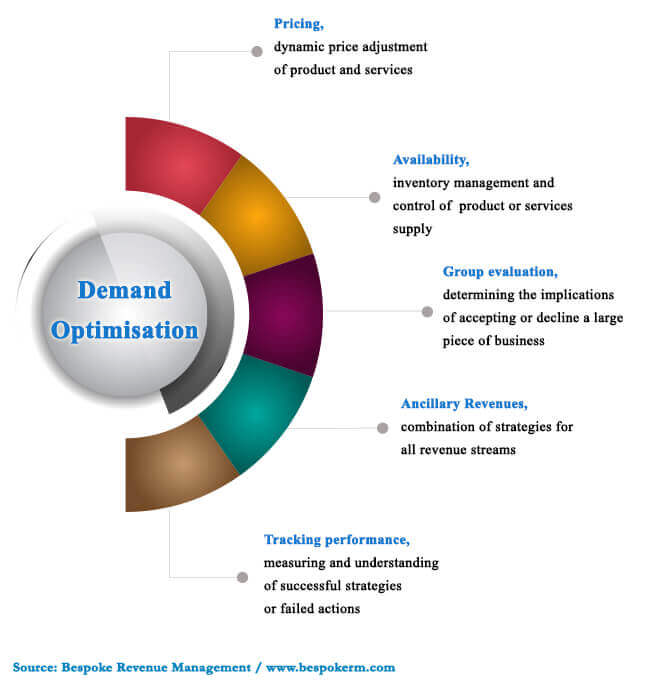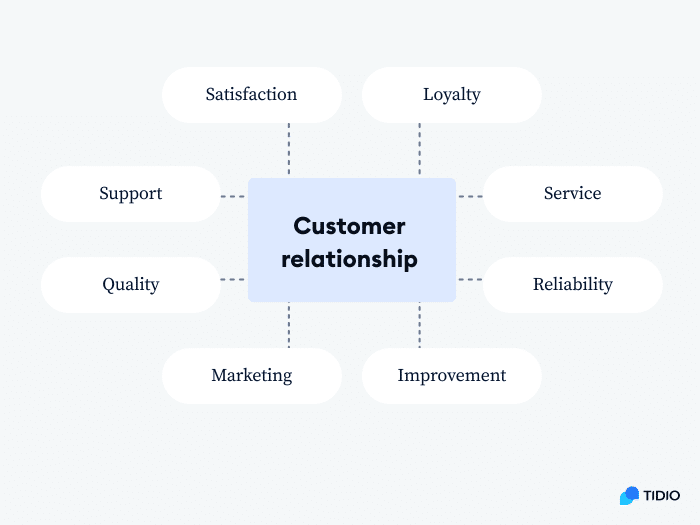In the digital age, subscription pricing models have become the standard for many businesses. This shift is fueled by the desire to deliver personalized experiences to customers, an endeavor that is at the heart of modern marketing and sales strategies.
These pricing models also play a significant role in improving the efficiency of a company’s Revenue Operations (RevOps). RevOps is the alignment of sales, marketing, and customer service operations to create a seamless, efficient revenue process.
For instance, let’s consider a Software-as-a-Service (SaaS) company that relies on monthly or annual subscriptions for revenue. If their pricing plans don’t consider inputs from sales, marketing, and customer support data, it might deter their target audience from adopting their product leading to missed opportunities.
However, with an optimized subscription pricing strategy aligned with RevOps, the company can better attract and retain customers, leading to sustainable revenue growth.
In this article, let’s delve into five tips that will help you optimize your subscription pricing and unlock your brand’s revenue potential.

1. Conduct Market Research and Competitor Analysis
The foundation of a successful pricing strategy lies in a deep understanding of the market and the competition. For example, if your competitors offer a similar service at a lower price, you may need to rethink your pricing strategy.
Ignorance in this aspect could lead to significant revenue loss. Here are some actionable steps you can take to conduct thorough market research and competitor analysis:
- Tangibly Define Your Learning Objectives: Is it the market trends, competitor pricing, or customer preferences? Having well-defined objectives will guide your research and make it more effective in optimizing your subscription pricing.
- Adopt a Metrics-Based Approach: It’s crucial to back your pricing decisions with data. Identify key metrics like market share, growth rate, and average revenue per user (ARPU).
- Choose Comparison Parameters Based on Your Goals: Whether you aim to gain more customers, increase revenue, or improve retention, align your comparison parameters accordingly. They could be tiered pricing models, features offered, or customer service quality.
- Set Strict Deadlines and Stick to Them: Market research and competitor analysis can be time-consuming. Define strict deadlines for each step of the process to avoid getting lost in a sea of information. This will keep your work focused and efficient.
To facilitate your research, you can use tools like SEMRush for competitor SEO analysis, SurveyMonkey for customer surveys, and Google Trends to track market trends.
2. Understanding Your Customer’s Perceived Value and Willingness to Pay
The ‘Perceived Value’ of a product or service is the customer’s assessment of its worth. It’s what they believe they’re getting in exchange for the cost – a vital aspect because it essentially determines whether a product is worth the price tag or not.
For example, if a user feels your service solves a crucial problem for them, they might perceive a higher value in your service compared to the alternatives.
Understanding your customer’s willingness to pay (WTP) is paramount in determining the optimal price. For instance, if customers don’t see much value in your offering, they might be reluctant to subscribe, even at a lower price.
To accurately gauge the customer’s perceived value and WTP, use a mix of qualitative and quantitative methods such as:
- Surveys: Use online surveys to gather insights about your customer’s perception of your product’s value. Try to keep the questions short and to the point.
- Focus Groups: Conduct focus group discussions. These discussions can give you deep insights into what customers value most in your product and what they would be willing to pay for those features.
- Customer Interviews: Direct conversations with customers can give you a nuanced understanding of their needs, expectations, and how much they value your product.
3. Leveraging Dynamic Pricing Models
Dynamic pricing models are a strategic approach to setting prices where prices can vary based on factors such as customer behavior, demand, and market conditions. This model allows businesses to capture different customer segments based on their varying willingness to pay, effectively maximizing revenue.
In contrast to static pricing, where one price fits all, dynamic pricing stands out by embracing the diversity of your customer base.
Suppose you offer project management software. Freelancers and large corporations would have different usage patterns, needs, and, importantly, different budgets. With dynamic pricing, you can adjust the cost according to each customer segment’s distinct requirements and financial abilities.
This approach not only widens your market reach but also ensures that your pricing is as personalized as your solution, thus resonating better with your RevOps meaning — the intersection of marketing, sales, and service operations aiming for higher profitability.
Despite the advantages, there can be a few challenges when implementing dynamic pricing. Let’s take a look at them and see how they can be addressed:
- Customer Perception and Satisfaction: Customers may perceive dynamic pricing as unfair or complicated. It’s crucial to educate your customers about how the pricing model works and ensure they understand they’re only paying for their specific needs. This transparency fosters trust and satisfaction.
- Complexity in Management: There are various pricing management tools available, like Pricefx and Prisync, that can simplify the process by monitoring market trends and automating price adjustments.
- Potential Price Wars: To avoid this, focus on differentiating your brand based on its unique value proposition (UVP). Make your UVP clear to your customers, so they understand they’re not just paying for a product, but a unique solution that meets their specific needs.
4. Run pricing experiments
Understanding your pricing strategy’s effectiveness isn’t merely about guessing or assuming; it requires rigorous testing through pricing experiments. They allow you to tweak your pricing models, observe customer responses, and further refine your pricing structure based on data.
- Price Elasticity Testing: Tweak the pricing at regular intervals and observe customer responses. For instance, you can gradually increase the subscription price for your SaaS tool and monitor the impact on subscription rates and customer feedback.
- Bundle Pricing: Group different (but related) services or features into a single package at a reduced total cost, then monitor the acceptance and success of the bundle. For instance, a CRM software company might bundle in advanced analytics, automated email responses, and customer support under a premium package.
- Discount Testing: Offer a discount on your services for a certain period and observe customer reactions. For example, you could offer a 20% discount on annual subscriptions for your project management tool and see if it encourages more long-term sign-ups.
- Penetration Pricing: This strategy involves setting a low initial price for a new service or feature to attract customers and gain market share. For instance, you could offer a new advanced reporting feature at a lower price initially and assess the adoption rate.
- Psychological Pricing: This strategy banks on the customer’s emotional response to certain price points. For example, setting the price at $9.99 instead of $10, known as “charm pricing,” can make the cost seem more attractive, even though the actual difference is minimal.
5. Review your pricing based on customer feedback and market conditions
Market conditions, customer preferences, and competitive landscapes are constantly evolving, necessitating regular reviews and adjustments to your pricing strategy.
- Analyze Sales Data: In-depth sales data analysis allows you to identify trends, understand customer behavior, and optimize pricing for maximum revenue.
- Perform Sentiment Analysis: Sentiment analysis helps you gauge customer perception and adjust pricing to align with their value perception.
- Monitor Social Mentions: By tracking social mentions, you can gauge real-time reactions to your pricing changes and adjust accordingly, ensuring your pricing remains in tune with customer sentiment.
- Track Competitors’ Pricing: If your competitors’ pricing provides more perceived value, it’s a sign that you may need to reassess your pricing structure. Competitor price tracking ensures your pricing remains competitive and provides the best value for your customers.
Wrapping up
In the journey of unlocking revenue potential, understanding the landscape in which you operate is crucial. Through comprehensive market research and competitor analysis, you can gather invaluable insights that guide your pricing decisions and strategies, ensuring you stay competitive and provide value to your customers.
Next, understanding your customer’s perceived value and willingness to pay is essential. By doing so, you’re aligning your pricing structure to the customer’s perception of your product’s value, thereby optimizing your chances of securing a purchase.
Leveraging dynamic pricing models can be a game-changer, allowing you to cater to different customer segments effectively. Although it might introduce new complexities, tools and unique positioning of your brand can help overcome these challenges, ensuring customer satisfaction and efficient management.
Running pricing experiments is another powerful way to optimize your subscription pricing. Testing various approaches like bundle pricing, discount testing, or psychological pricing can offer insights into what works best for your customers and your bottom line.
Lastly, reviewing your pricing based on customer feedback and market conditions is a process that should never be overlooked. Using the right tools and methods to analyze sales data, perform sentiment analysis, monitor social mentions, and track competitor pricing, will keep you adaptable and responsive to the ever-changing market dynamics.




